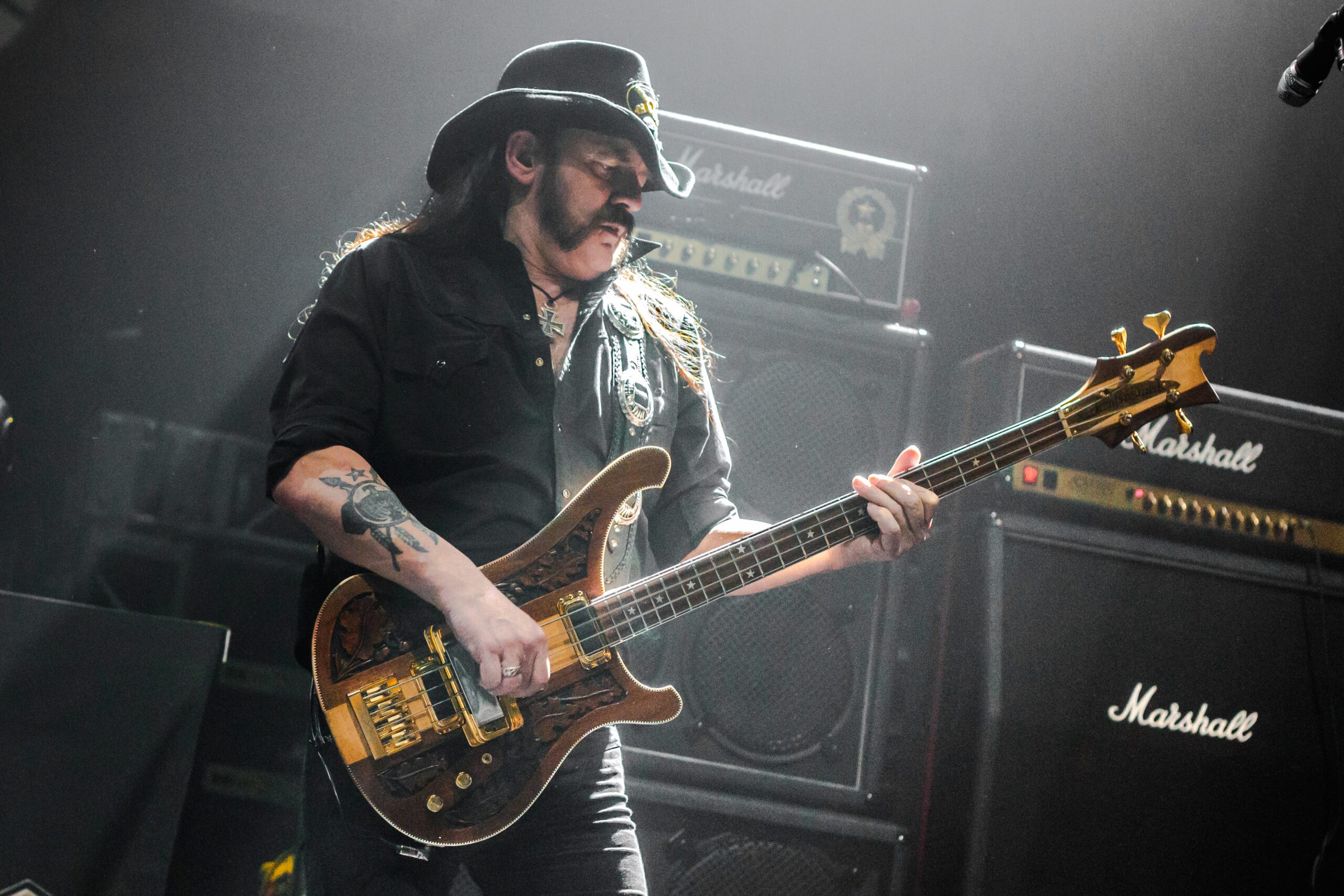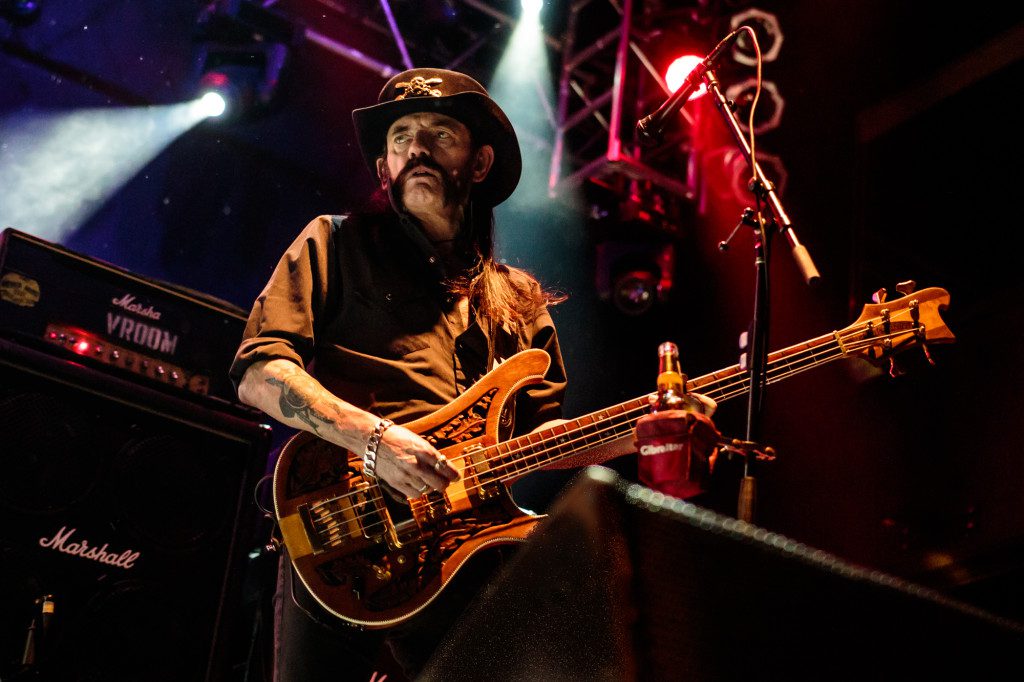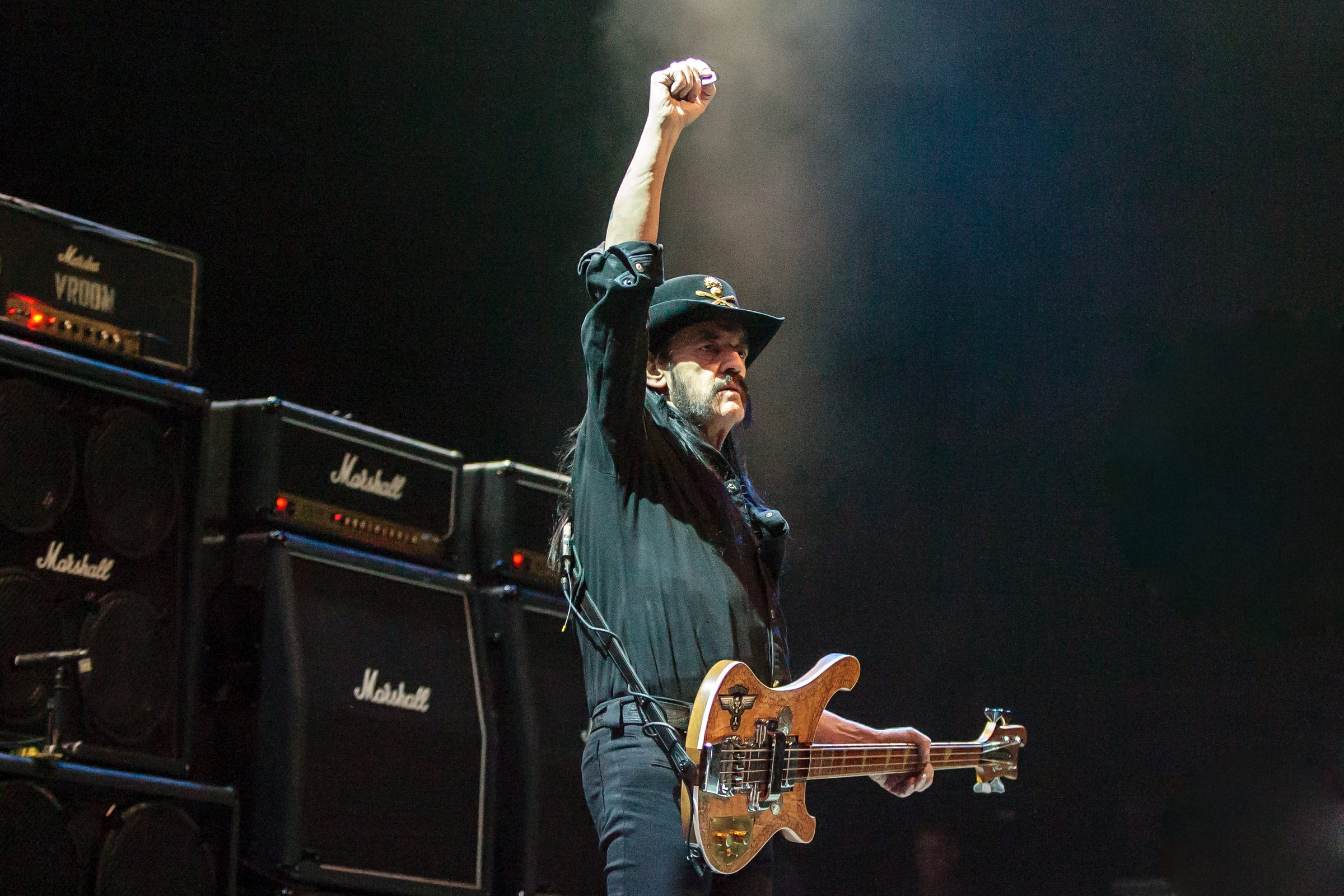On Minor Threat’s recording of the song “Out of Step,” singer Ian MacKaye says, “Go. Yes go!” seconds before the band launches into the buzzsaw-like wall of sound. On the first Gorilla Biscuits seven-inch, the singer Civ’s eighteen-year-old voice cracks oh-so-pre-pubescently while yelling the high notes of every song. Verbal Assault’s whole album Trial is filled with the tinny sounds of guitarist Pete Chramiec’s hands sliding up and down his Gibson’s delicate metal strings. Some would say these are problems that should have been smoothed out in the mixing process, but they are my favorite moments in music, evidence of real people behind the recordings.
In seventh grade I took Music instead of Home Economics. I picked trumpet because it was loud and hardly any girls played it. Mr. Conjelko taught us the notes and scales in a small class. He named the dots on the page with letters, but it felt like I already knew them, like some secret language I was born with and just hadn’t used yet. Three fingers on my right hand worked the pearl-topped brass valves up and down in different combinations while the left basically just held the instrument up. Some patterns, like first and third finger down, made completely different notes, depending on embouchure—how you held your lips to blow into the mouthpiece. You just had to imagine the sound, and then make it real. Mr. C made me try out for symphonic band. I made it and was put in the first trumpet section, where only eighth graders sat. They didn’t talk to me. My parents paid $20 a month for two years because this seemed like something I could stick with.
I played until 11th grade. When I changed from Catholic to public high school I didn’t want to march in a dorky marching band—that meant going to football games and wearing a uniform. And when I played, my cheeks puffed out even bigger than they already were, and who ever heard of a punk band with a trumpet? That would be ska, and unless you were Madness, ska sucked. With money from babysitting and my job scooping stinky ice cream at Baskin & Robbins, I bought a pale yellow Cort-brand bass and a ten-inch black Guerilla practice amp for $100 at the local pawnshop.
Some floppy-haired acidhead guitar player showed me a few notes at his house after school one day, but mostly I played along with Ramones records in my bedroom. I made the white nylon strap long for the bass to hang low, below my hips, like Dee Dee’s did. If I turned too quickly with it on, its body bruised my thighs. Standing barefoot in front of some spinning black disc on the turntable, I’d turn the volume up to drown out the Quiet Riot coming from my sister’s room, then let the low end of every song pump through my legs, spine, arms, and hands. I whispered each chord change while playing single notes: GGDDAAEE/ GGDDAAEE/ GGDDAAEE/ GGAAEEE, fighting the urge to sing along, because I could not do both at the same time. I hated using a pick, that little triangular piece of plastic separating my fingers from the instrument. After dropping it for the millionth time, I didn’t stop to pick it up. With each pluck the thick metal strings vibrated beneath my right hand’s fingertips while my left worked the fret board furiously, thrilling my ears with every sweaty squeak. My blisters smelled like nickel afterward. Regular guitar strings were so little and thin, plus there were all those finger arrangements to memorize. A bass was something you could really wail on. It was hard (but not impossible) to break a string. I entertained myself this way for hours, probably months before I dared play in front of anyone else. After my first band practice with three guys from school in someone’s living room, our guitarist said, “You play like Lemmy.”
“What do you mean?” I asked.
“Sloppy. Fast,” he shrugged.
It was the greatest compliment.
I may have played like Lemmy and stood like Dee Dee, but in the mirror I looked more like the Go-Gos. And though I was momentarily compared to a legendary bassist, my band unceremoniously replaced me with someone else. That same year I started a fanzine—a cut-n-paste Xeroxed magazine of interviews, photos, and articles about the Washington, DC-area music scene. It was easy to talk to anyone you wanted to back then. Punk rock was not yet being used in commercials to sell Swiffers and luxury cars, and no one had an agent or manager. Pre-Internet, zines popped up around the world as a way for people in underground scenes to communicate with one another. You could run a free ad in the back of Maximum Rock-n-Roll, and for a few stamps or a dollar sent through the mail, trade zines with people in Detroit, California, Amsterdam, Italy, anywhere, receiving reports of what angsty teens in faraway lands were doing. Mine only lasted two years and a few thousand copies, but I continued freelance writing for magazines, interviewing artists that interested me.
Fourteen years after learning to play bass and while living in Los Angeles, I am randomly assigned an interview with the man and mouth behind Motörhead.
The electricity is out, so the Rainbow Bar & Grill is blacker than usual. The front door is propped open, offering a rectangle of sunlight. Framed candid photos of John Lennon, Guns-n-Roses, Motley Crue, Poison, Whitesnake, the Doors, Judy Garland, and others stare into the dark from the walls. It is two o’clock in the afternoon—the Sunset Strip’s naptime, when floors are usually mopped, bartenders sometimes serve lunch, and rockers are home conserving energy, waiting for sundown, when life begins.
Lemmy is seated at a Ms. Pac-Man table arcade game, knees wide and slightly hunched over a short glass of light brown liquid. He is wearing his ever-present skinny black cloth cowboy hat, tight faded blue jeans, and a thin blue pearl-snap button-down with the sleeves rolled up to his elbows. A beat-up black biker jacket hangs on the back of his chair. A few people buzz around him, setting up microphones and audio equipment. This interview will stream live on a heavy metal website’s Internet radio show, if the power ever comes back on. A polished blond woman with a clipboard introduces herself to me. She asks to see my questions. I hand her the list I’ve scratched into a spiral notebook.
“You can’t ask this one,” she says, pointing to my note: ‘Nazi memorabilia.’ I’d heard he collected the stuff and wanted to verify whether or not the rumor was true. “The rest are okay.” She dismisses me by handing back the notebook and turning to yell at one of the guys setting up equipment, “Duct tape these wires down. Someone’s gonna get hurt!” The editor of the Internet site walks up and introduces himself. I’ve written three pieces for him before but this is the first time we’ve met in person. He is shorter than I thought, and beneath the layered brown hair and pudgy face, he too is rocking the urban cowboy look. He walks me to the Ms. Pac-Man table, saying he hopes the technical difficulties will disappear soon.
“Lemmy, this is the gal who’ll be interviewing you,” he says, turning me toward the man. I extend my hand. Lemmy takes it and stands, a full foot and few inches over my five-feet-two. His long legs are incredibly thin. His fingers are covered in chunky silver rings. His pointy white cowboy boots that would look silly on anyone else. His belt buckle is a huge black Iron Cross set in silver. Dark brown facial hair frames his face, neatly trimmed into sideburns, goatee, and mustache. A few grays peek through here and there. His chops almost cover the two signature quarter-sized moles on the side of his face.
“It’s Shawna. Nice to meet you,” I say into his brown eyes. I have seen them stretched extra-wide open and psycho-like, both on-stage and in the “Ace of Spades” and “Eat the Rich” videos late at night on MTV, but here they are gentle, almost fatherly.
“A pleasure,” he says. A smile turns his mustache turns up at the corners, and he is shaking my hand like he means it. He has great teeth. I wonder if they’re fake. “Have a seat,” he says, waving me toward the chair opposite him at the tabletop game.
“Are we going to play?” I ask, sitting down.
“I’m quite good,” he laughs.
“Me too,” I say. “Well, I was back in the 80s, anyway.”
“You’re on. As soon as the power comes back.” And with that, electricity hums through the air, bar lights blink, machines beep, and people sigh grateful sighs.
Here is where I’d normally consult the tape, or in this case, digital file, to hear exactly what was said, then type the conversation out for the reader, shape it into context. But there is no audio file. The year was 2001, and like so many other Internet companies, this one folded soon after my interview. The editor emailed the gigantic file to me later on, and I remember asking someone to store it on his or her online server, but what happened to it after that is a mystery. For this interaction there is only memory, that well-known faulty resource, to rely on. Of the moments Lemmy and I shared, I have no proof, no hard evidence, no transcript. Our conversation is lost in cyberspace, one Tuesday afternoon easily evaporated.
It’s not like anything earth-shattering was said between us. He was promoting the remastered release of the Orgasmatron record. He has given interviews with thousands of people and would certainly not remember mine. But I know it happened—I felt it. As everyone shares their photos and memories of this man in the wake of his passing, am I wrong or shallow for wanting to write it all down, to have a souvenir? Maybe human interaction, even with public figures, should remain private. Is life without documentation unbelievable? Instinct or madness drives me to capture moments with words. I wish our brains were reliable recording devices, that memories were neatly stored, labeled and ready-for-download. Instead moments passed are these nebulous things, mischievous musical notes fading like a cheap guitar on ‘sustain.’ Or maybe they never completely die, and just offering the remnants of what you have is like yogis chanting ohm for some universal something to be felt.
I know I asked Lemmy about his first band, Hawkwind. My second question was, “So, do you collect anything?” to which he immediately replied, “Yes, World War II memorabilia. I just collect the things, not the ideas.” The publicist glared at me over his shoulder, but we were live, and he was on a roll. The famous Jack-n-Coke-soaked voice emerged. His fast speech and Welsh accent made him a little difficult to understand. “I have a black girlfriend. If I were any kind of a Nazi sympathizer, she wouldn’t be too happy about it now, would she? I’m a history buff. I watch the History Channel endlessly. How can we do better in the future if we don’t know our pasts?” he asked. I said something about him being a fixture at the Rainbow, and he shared that he owned a house in the hills nearby. I asked him about his tattoos, touching an old smeared eagle on his forearm. He rolled his sleeves up and showed me more. I asked about his first shows, and he talked about seeing the Beatles, about how Chuck Berry and Little Richard influenced him, about how much he loved the Ramones. They were all still alive then. When the interview ended, I said I was thirsty and while the bartender went for a bottle of water, Lemmy offered me a sip from his glass. I took one and he laughed at my puckered response. At age thirty-one, this was my first taste of Jack Daniels. We played Ms. Pac-Man for almost thirty minutes. He kicked my ass.
While saying our goodbyes, Lemmy stood again and hugged me with his thin arms, then bent down and kissed my cheek. Afterward, friends wanted to know how the interview went.
“Ew! Did his warts touch you when he kissed you?” one asked.
“I don’t know,” I said, surprised at the question. “I think they’re moles, anyway.”
I hope so, I think now.
***
All photographs © Karen Mandall.








One response
Thanks for this, it’s brief but lovely.
Click here to subscribe today and leave your comment.